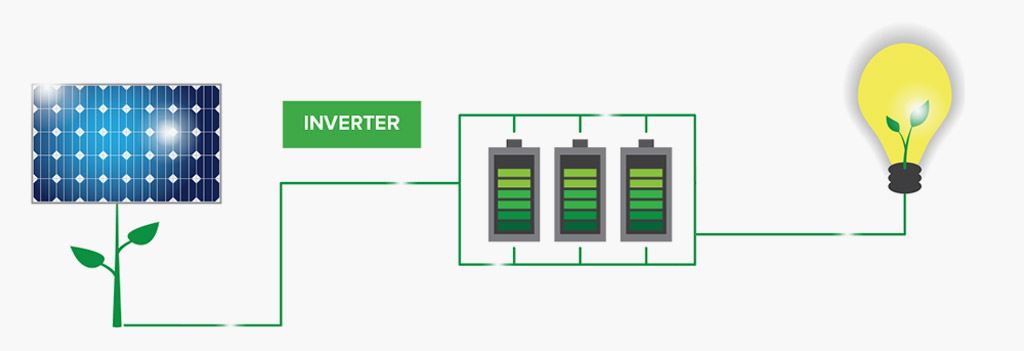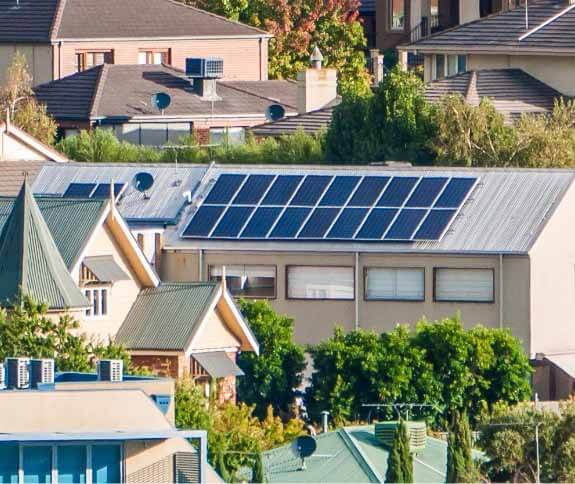What is battery storage?
Solar battery storage, or a solar battery system, is an optional component for a solar power system. A battery system will charge a battery with a solar system’s excess energy generated and store the power to be used when solar panels are not generating energy (at night).
For a battery to be useful the solar system needs to be generating excess energy during the day for the battery to store. This excess energy is there for you to run your household at night or when the sun is not out. If you have a solar system without a battery your home will run off the grid during these times and any excess energy will be fed to the grid in return for the feed-in tariffs.
Adding a battery to your solar system is the next step for energy independence however the benefits of batteries are still secondary to the benefits of solar power system itself. For some households adding a battery system can be of great benefit and minimise a home’s reliance on the grid or allow you to become independent from the grid as part of a standalone (off-grid) system.
It’s important to note that whilst batteries are gradually coming down in price, adding a battery won’t necessarily benefit your current financial situation like a solar system will. Today’s prices (if your state does not offer subsidies or incentives for battery) could have you looking at an expected return on investment in 8-15 years. As technology advances and batteries become more accessible it is expected prices will drop, similar to how they have for solar systems.

Households with smaller solar systems that aren’t generating a large amount of excess power may find it more cost-effective to receive feed-in tariffs for their excess power instead of purchasing a battery. Those with large solar systems and a substantial amount of excess power could benefit greatly from installing battery storage.
Battery Specifications & Factors that’ll affect pricing
GOVERNMENT INCENTIVES
The Federal Government and most State Governments offer assistance and incentives for solar and/or battery storage for solar pv systems. Depending on which state you live in, these incentives will affect the outright costs of your battery storage. See what Government incentives are available in each state here.
CYCLE LIFE-TIME
The number of times a battery can fully charge and discharge. A battery’s lifespan is based on the number of times it can be fully charged and discharged before the battery reaches the end of its functional life.
BATTERY POWER (KW)
How fast it can be charged or discharged.
STORAGE CAPACITY (KWH)
The maximum amount of energy a battery system can store.
DEPTH OF DISCHARGE
The depth a battery can be discharged is the degree a battery can be emptied to its total capacity. Being able to discharge to full capacity means you are getting more out of the energy that has been stored and it is not degrading over time in the battery when stored.
BATTERY MANAGEMENT SYSTEM (BMS)
An electronic ‘smart’ system that gathers data and manages the battery ensuring it does not overload or operates outside of its safe functioning zone.
INVERTER
Battery systems require their own inverter if your solar system does not have a hybrid inverter
WARRANTY
Length of time or cycles the battery system is under guarantee
BLACKOUT PROTECTION/BACKUP
It’s important to note this is not a common feature of a battery system and could cost thousands of dollars to include. Blackout protection not only requires additional components but also a specialised installation and rewiring of your home. For grid-connected homes, the cost for blackout protection can outweigh the benefit.











